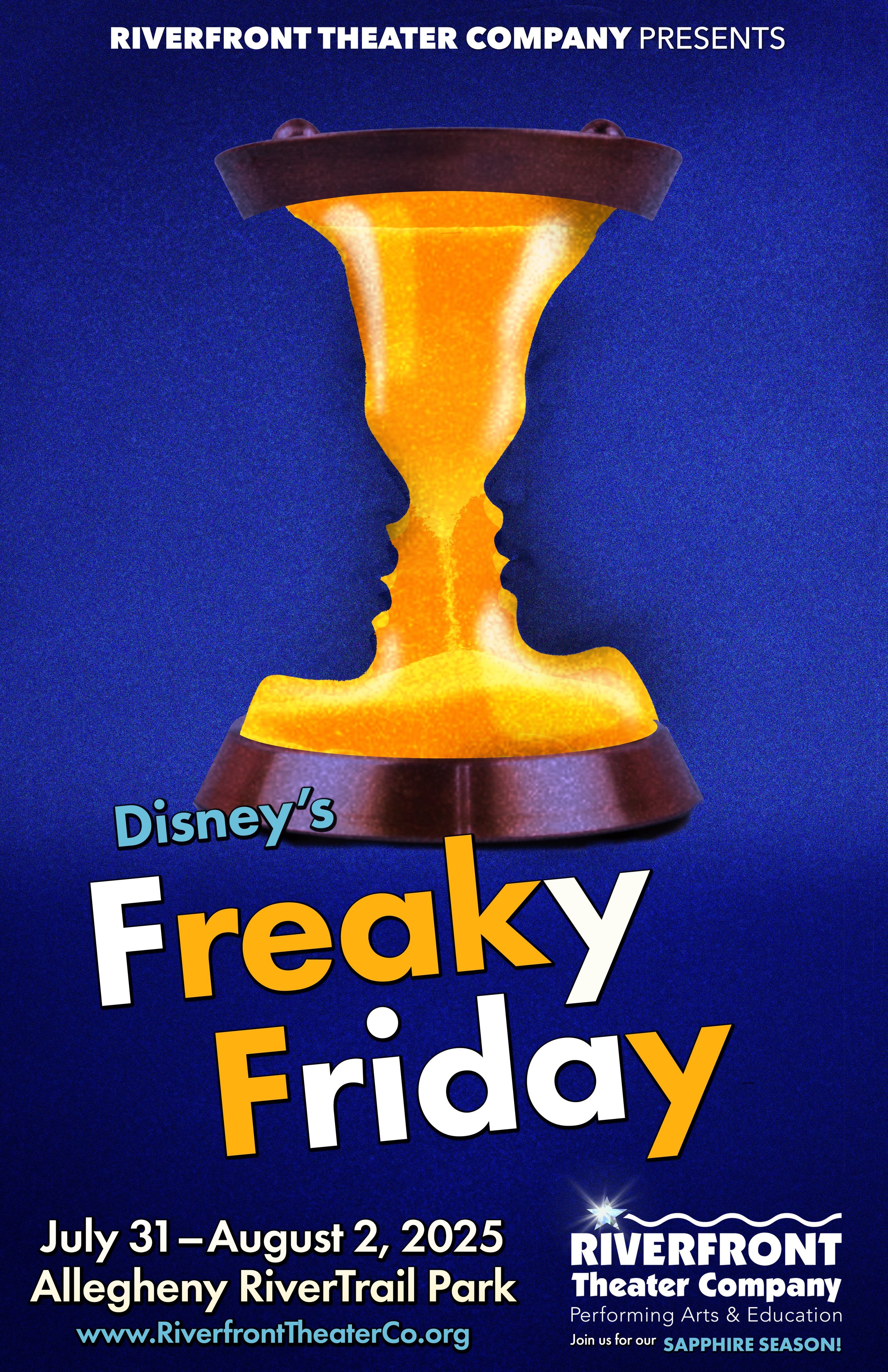Introducing RTC’s 2025 Season!
As we celebrate our 65th — our sapphire — anniversary, we’ve embraced deep, rich blues to mark this milestone year. This season’s lineup explores the intricate, often chaotic dynamics of dysfunctional families. Each show’s poster reflects that theme, transforming into a surreal, illusion-like glimpse into a world just slightly askew, a visual echo of the stories we’re telling on stage this year.
Edward Albee’s The Goat confronts marital taboos head-on, and we felt a wedding ring was the most fitting symbol to represent its provocative themes. Our artistic director envisioned a ring with a goat’s eye in place of the diamond — unsettling, uncanny. Nestled inside a jewelry box, as if tucked away or returned, the ring sits beneath the looming shadow of a goat. The animal stares directly at the viewer, a visual confrontation that mirrors the play’s unflinching challenge of societal norms.
I chose not to use a literal image of a goat, but still wanted its presence to be felt — symbolic rather than direct. As with the rest of this season’s artwork, I intentionally left generous negative space to evoke absence, awkwardness, and discomfort. These stories of dysfunctional families thrive in the tension of what’s unsaid — where silence and emptiness speak just as loudly as words.
The concept here speaks volumes on its own: a pill bottle capped with piano keys, symbolizing the intricate link between music, medicine, and mental health in Next to Normal. Just as Diana turns to medication to manage her mind, the show turns to music to express emotions too overwhelming for words.
I can almost hear the bottle opening — the twisting motion striking a dissonant chord, a clash of keys. The piano cap suggests both control and confinement: to reach the pills, Diana must quite literally “face the music.” It’s a surreal image, one that reflects the psychological layers and emotional turbulence that define the show.
I wanted to focus more on the concept of time in Freaky Friday, rather than the differences between the mother and daughter. An hourglass with their faces appearing in the negative space creates a striking visual metaphor for the body swap — two identities suspended and shifting within the flow of time. The hourglass not only captures the surreal nature of their transformation but also reinforces the urgency of the story: time is literally slipping away.


